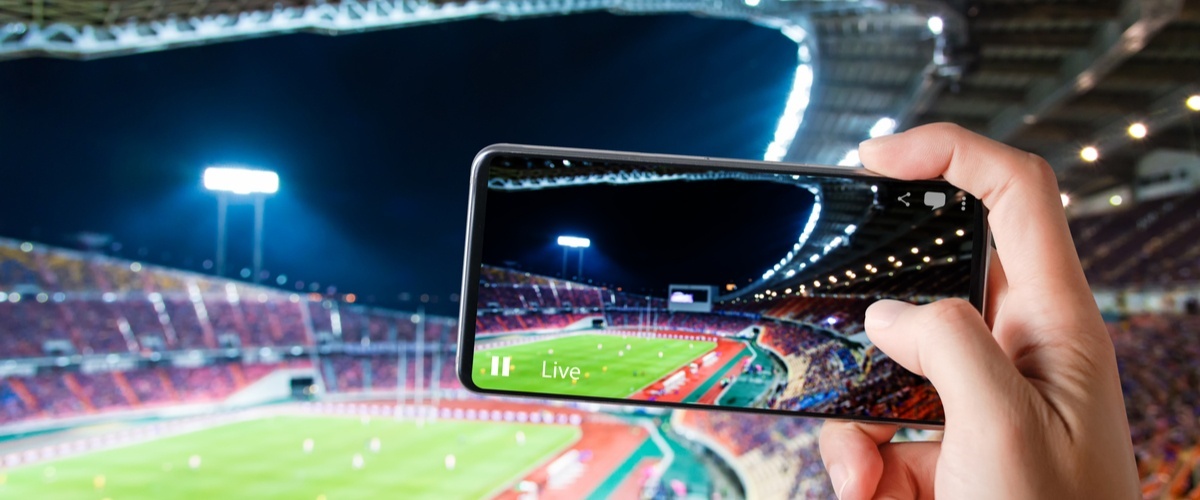All this will help venues, team owners, and league officials learn more about their fans in a way you can’t get through paper ticket sales. A lot of this intelligence today is calculated through averages — say there were 30,000 fans and 10,000 beers purchased. 5G will allow drilling down into the data to find trends in concessions, arrival and departure times, where people go after games, etc.

https://venturebeat.com/2021/01/04/5g-will-help-sports-venues-put-the-fan-in-focus/
Sports fans are demanding more out of live game experiences. With increasingly robust options for viewing at home and on the go, venue operators need to offer more if they want to compete once the COVID-19 pandemic is under control.
As fans slowly return to live sporting events, it will be more important than ever for stadium owners, leagues, and franchises to collaborate to offer an enhanced experience. Next-generation 5G networks can help them connect to the game in new ways and become more than just passive spectators.
Why 5G?
Fans expect that they’ll be able to connect to their devices smoothly during sporting events, whether it’s to share photos and live experiences of the game, check scores, or text with friends and family. As a result, network traffic in venues grows 50% every year, requiring stadium owners to regularly increase their Wi-Fi and operators’ 4G capacity to keep up. This can be difficult with existing technologies as the capacity upgrades don’t translate into incremental revenues.
Today, everyone can share video live on social media, but 20,000 people doing it at the same time at a concert or game often overloads the network. Sharing experiences with your friends and family are often limited to still photography and text due to overloaded venue capacity.
5G is a better way. In addition to providing expanded capacity that can grow with the network, it brings entirely new experiences for fans, integrating video in new and innovative ways.
Making the in-venue fan experience more interactive
Key stakeholders know they need to offer more to fans in-stadium. The high capacity, low latency and speed of 5G can bring entirely new experiences. For example, augmented reality capabilities will allow fans to access overlays and commentary, similar to the TV displays and analysis they could see at home, as part of their in-person experience.
Also, increased capacity for video cameras could allow fans in the stands to create a “personal Jumbotron,” allowing them to zoom in on one of the many cameras deployed in the stadium — all from their mobile device.
This could work in the other direction as well, providing a benefit to media organizations. Increased mobile broadband capabilities will allow outlets to send multiple reporters into the stands armed with cellphones, rather than one crew with professional camera equipment. Organizations can also tap into video from fans, creating dozens or even hundreds of “fantographers” to show the excitement within the stands, rather than a professional camera operator zooming in from a distance.
Bringing the live experience home
While the in-stadium experience is paramount, there are ways that 5G can enhance the sports viewing experience away from the arena as well.
Again, here is where better video capabilities can play a role. For example, in motorsports, multiple cameras can be affixed to a car. This isn’t particularly new, but with existing technologies, only one camera can transmit one at a time and angles are controlled by a single director. With 5G, multiple streams can be supported, and viewers can select their preferred view. For sports games, multiple cameras running simultaneously on a 5G network could allow viewers to pause an exciting goal or touchdown pass and view it from multiple angles.
There are other ways to bring sporting events to fans outside the stadium. For example, Ericsson recently delivered an augmented reality-powered concert. This technology could be used to bring pre- or post-game interviews directly into homes, or even connect with friends at the game.
A fan-focused approach is good business
5G networks in venues offer business opportunities as well — for stadium owners, as well as app developers. For venue owners, it has been difficult to charge just for Wi-Fi access — it’s like selling salt and pepper in a restaurant when people expect it to be free. But 5G networks offering distinct experiences unavailable over Wi-Fi would be different. People might pay an extra 10% on top of ticket prices. Unlike Wi-Fi, enhanced 5G services could be targeted at certain tiers of ticket holders.
Also, if 5G stadium networks are built by a single network, cell phone users using other service providers’ networks could receive pop-ups on their phone offering access to the 5G network’s extra features for an additional fee.
Once this infrastructure is in place, there will be an app ecosystem focused on enhancing and personalizing the fan experience. This could be from the perspective of the venues (connected to things like parking and concessions) or from the leagues and sports governing bodies (videos, live statistics, etc.)
5G and the ability to offer digitally enhanced experiences will be critical as sports venues look to attract and retain fans for live games — and to stay connected with them away from the stadium. But by keeping the fan in focus, and creating ways to individualize and expand what it means to attend a game, owners can continue innovating on what it means to be a sports fan.
Article written by Peter Linder, a 5G Evangelist at Ericsson.
Original article 04.01.21 on the www.venturebeat.com website.
To view the full article click here
© The Fan Experience Company 2020
